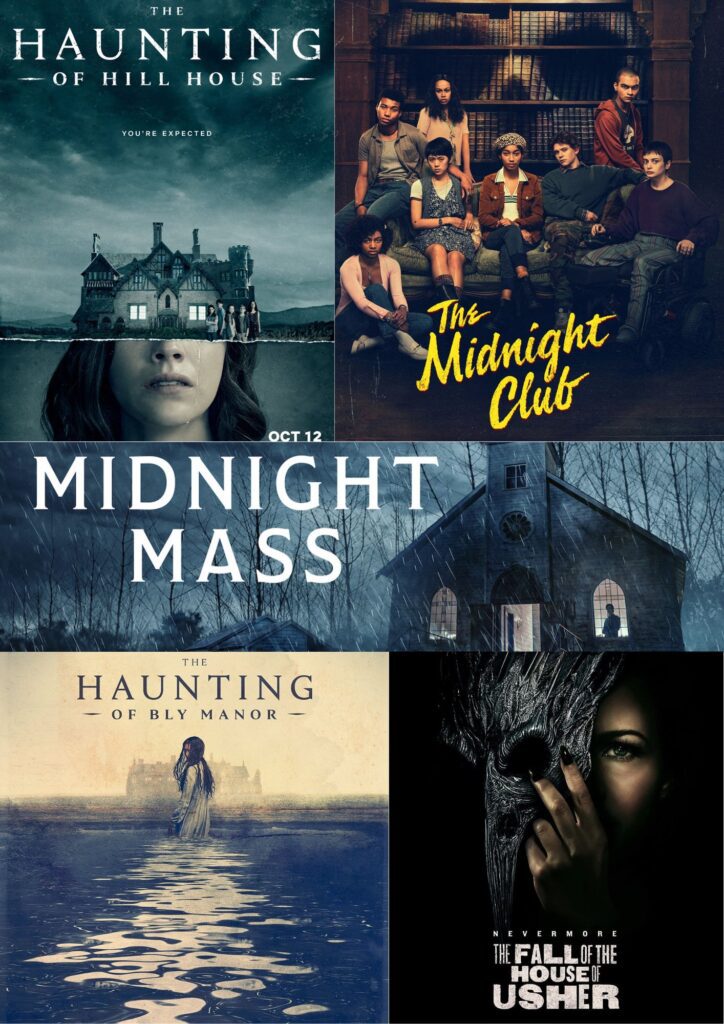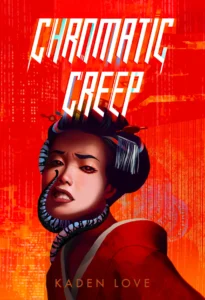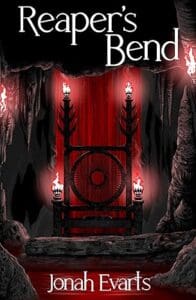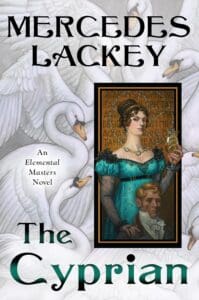
As the dust settles on Mike Flanagan’s newest series The Fall of The House of Usher, so too does the dust settle on his time with Netflix. In December of last year Flanagan announced that he had signed a TV deal with Amazon Studios, and although I am sure there will be plenty of long days and pleasant nights ahead for all of us to enjoy in his company, it feels like the perfect time to reflect on Flanagan’s magnificent body of work over the last 5 years.
(A quick disclaimer, I will be focussing on Flanagan’s episodic shows in this article rather than his films)
The Haunting of Hill House (2018)
A sudden death in the Crain family sparks an abundance of troubling memories back to life from their past lives at Hill House. In the dawn of this tragedy they must join together and confront the demons of their past… as well as Hill House.
As things tend to, it all began at Hill House.
If you go into The Haunting of Hill House expecting a clean adaptation of Shirley Jackson’s psychological terror, you may find yourself disappointed. Flanagan’s version, much like the shows still to come, is more a homage to the works of the author it is based on rather than a strict retelling. Whereas the book solely focuses on Eleanor Vance and the legacy of her family trauma – her inability to escape not just her past, but her bloodline, Flanagan expands the family. Eleanor is still there, but so are sisters Theo and Shirley, brother Luke, and parents Hugh and Olivia. If Jackson’s novel is the witnessing of a sole individual, her tragic flaws, and even more tragic downfall, then Flanagan’s show is the deep dive into the broken and divided family that could make Eleanor’s downfall possible in the first place. The bitter essence of Jackson’s work is still very much present, however, and that is a compliment! Flanagan’s show is very much a family drama, but The Haunting of Hill House is also about the shackles that your bloodline can tie around you from birth, whether it be mental illness or the imprint of a failing parent – themes unabashedly Shirley Jackson.
The Haunting of Hill House blew me away when I first watched it. Not least because of the most scary jump scare I have ever experienced (if you know, you know), but also because it opened me up to a brand of horror that I was not previously aware of. Hill House is troubling and scary, but it also has heart. You grow to know and understand every member of the Crain family throughout the series and this raises the stakes in a way that was unexpected, but pleasantly so. Journey’s end in lovers meeting, but on this occasion Flanagan’s The Haunting of Hill House felt like the beginning of a new journey, and so it proved to be.
The Haunting of Bly Manor (2020)
Dani Clayton (Victoria Pedretti), a young au pair, is hired by a man to look after his niece and nephew at the family country house after they fall into his care. Arriving at the Bly estate, she begins to see apparitions that proceed to haunt the premises.
If ‘The Haunting of Hill House’ is filled with heart by the end, then ‘The Haunting of Bly Manor is most certainly full with love from the very beginning. On the eve of an unnamed couple’s wedding day, the bride, groom, and all those close to them gather around the fireplace for a ghost story, and so the story would be told. The show, like Bly Manor itself, is slow to sink its claws into you, but once it does there is no escaping unscathed.
What the show is missing in scares, something that its predecessor Hill House is brimming with, it makes up for in its character work. Every person at Bly Manor has a story to tell and tell it they do. There is a warmth and a cosiness to every interaction between the characters at Bly Manor, they are like one big surrogate family that you are simply bound to care for. It would have been easy for ‘secondary’ characters like Hannah Grose (T’Nia Miller) and Owen Sharma (Rahul Kohli), the housekeeper and the chef, to fade into the background in the midst of an old Gothic estate packed with old secrets and even older ghosts, but they shine in their own individual and collective roles.
As I say, I do not think that Bly Manor is as scary as its predecessor. Whereas Hill House steals from you and feeds off you, Bly Manor is more passive. It is not quite docile, but it is gentle and disorientating, lulling you into confusion. In truth when I reflect on The Haunting of Bly Manor, I think very little about the place itself and its lady in the lake, instead I think about Dani, Jamie (Amelia Eve), and their relationship.
The ghost story ends with its unapologetic correction to a love story. Coming after The Haunting of Hill House, and sharing its ‘haunting’ moniker, The Haunting of Bly Manor released with expectations that were both lofty and specific. Bly Manor does not scare in the same rough manner as Hill House; Flanagan deviates from expectations but certainly does not hide behind them. Besides, why have either a ghost story or a love story when you can have both, and they are the same thing, really.
Midnight Mass (2021)
A young man returns to his isolated hometown on Crockett Island, hoping to rebuild his life after serving four years in prison for killing someone in a drunk-driving incident. He arrives at the same time as a mysterious, charismatic young priest who begins to revitalise the town’s flagging faith. However, the community’s divisions are soon exacerbated by the priest’s deeds while mysterious events befall the small town.
‘Remember we are dust and to dust we shall return’
Next comes Midnight Mass which for me, is the best show on this list. Midnight Mass is the show that Mike Flanagan always wanted to make, and when he finally did, it was clear to see why.
Selfishly, I was always going to love this one. Vampires have always been my thing both because of my time at university studying them, and because of Stephen King’s Salem’s Lot, a story that Flanagan’s series shares elements with. My understanding of vampires has always been that they are adaptable, shape-shifting monsters that are eternally evolving to embody a specific societal anxiety, and Flanagan’s 7 episode miniseries is laden with such anxieties.
Faith in a higher power is interrogated vigorously throughout the show. It is a show about religion with no final answer. The final episode is a bloody ‘Lord of the Flies’ esque spectacle and within such a context it is hard to imagine the existence of a God, but you are left free to make your own mind up and have your own autonomy, as it should be.
Midnight Mass explores the dangers of religion when weaponised and used for selfish purposes, and Bev Keane (Samantha Sloyan), at the forefront of this, is undoubtedly one of, if not the most detestable villain that I can recall in any of Flanagan’s works. Behind her smile is a sneering elitist who loathes anyone that does not innately agree with her way of life or immediately fall in line. She is a hypocrite of the highest order and the perfect character for highlighting the fine line between religion and cult when you put your faith in the hands of someone with evil intentions. Scripture can be interpreted in one hundred different ways and the cult that Bev Keane develops through the ‘miracles’ that Father Paul Hill (Hamish Linklater) orchestrates is a cautionary tale in maintaining your faith in your own way and through your own core beliefs and morals, not someone else’s.
I could talk for hours about the blending of religion and vampirism and how interesting that is symbolically in the series, but in truth I have barely scratched the surface describing a show that also delves deeply into ideas such as alcoholism, family, and death; there are some truly beautiful monologues on what happens when you die that have stuck long in my memory. The only show on this list that isn’t loosely based on pre-existing material, I think that Midnight Mass is Mike Flanagan’s magnum opus. As much as I enjoy his inventive reimagining of stories, Midnight Mass was lightning in a bottle, and on this occasion, I hope that lightning strikes twice.
The Midnight Club (2022)
At a manor with a mysterious history, eight members of the Midnight Club meet each night at midnight to tell sinister stories — and to look for signs of the supernatural from the beyond.
Moving onto Mike Flanagan’s fourth and penultimate miniseries on Netflix and there is certainly a set of expectations in place for what people think a new Flanagan show should look like. The Midnight Club certainly deviates from its predecessors. If we loosely describe The Haunting of Hill House as about family, Bly Manor as about love, and Midnight Mass as about faith, then it would be fair to describe The Midnight Club as being about death. On surface level this suggests a dreary and gruesome show filled with traumatic events and exactly that, death. Of course there is death, but what we really get is a heartfelt story, one about a group of terminally ill teenagers attempting to come to terms with their impending deaths.
The tone is definitely different in The Midnight Club, there is more of a YA feel to the show both audibly through its music and often dramatic sound effects, and visually through the constant jump scares. I thought that the cast of characters and the main storyline were both compelling, particularly Ilonka (Iman Benson), the main character, whose relationship with the notion of dying changes dramatically throughout the show. The hook of the show, and its name, of course, is the midnight club. Overall, I thought that the stories within the story were a mixed bag, some more memorable than others, but the concept of the children telling stories to each other served a much greater purpose.
The midnight club is an ode to horror and a celebration of storytelling and its powers. Stories offer an escape from reality, something the children desperately need, but they also offer an abstract solution to dealing with struggles. Some of the tales are fun but others reckon with depression, loss and the inevitability of death. Horror can be both an escape and a solution and the club offers both to the children.
‘The sounds of stories are the sounds of life’
The Midnight Club may not be for everyone who enjoyed Flanagan’s previous works, but it is a worthy addition to his collection that continues to show that when you are floundering out in the depths of darkness, there is always a lighthouse just around the corner.
The Fall of the House of Usher (2023)
Siblings Roderick and Madeline Usher have built a pharmaceutical company into an empire of wealth, privilege, and power. However, secrets come to light when the heirs to the Usher dynasty start dying.
And so we come to act five, the finale, the denouement, and just like in any climax to a play, and a tragic one at that, it is time for the blood to flow and for the bodies to fall. Mike Flanagan leaves Netflix with a bang with this final instalment of a miniseries. The Fall of the House of Usher is the welding together of multiple stories from 19th century author Edgar Allen Poe’s grand list of works, and it is a bloody delight.
The slow and pitiful demise of the Usher family is as satisfying as it is terrifying, each death unique and jaw-dropping in their excellent executions. The show relishes in cutting down a family that has built its empire along and across oceans of blood, and yet Flanagan still maintains a strong and looming sense of dread throughout that is so inherently Poe. It is truly impressive how Flanagan packs so many memorable characters into a 10-episode series, and I think this is where the dread originates. If Roderick Usher (Bruce Greenwood) was heartless as well as selfish and greedy, then the slow ruin of his house would matter less than it does, but there is an inherent suffering, a pervading guilt, that plagues the story. Each death hits like a tonne of bricks no matter how satisfying the conclusion.
The Fall of the House of Usher to me represents a truly modern Gothic. Tropes of Poe’s work and more general Gothic fiction are present: a crumbling empire- rotting and corrupted, the return of a vengeful past- spectral and hateful, and a generation of children doomed by the actions of their elders. This last point in particular adds substantially to the overall success of Flanagan’s adaptation of Poe’s gothic works, and the reframing of it in a modern setting.
In his final hurrah with Netflix, Mike Flanagan once again breathes new life into old material. Most likely there was never any fear of writers such as Shirley Jackson, Henry James, Christopher Pike, and Edgar Allen Poe being eaten up and swallowed by the past, but innovative and fresh takes on the material, much like the works of Mike Flanagan, ensure that they will live on, evermore.




They’re all definitely some great sites!
GTU